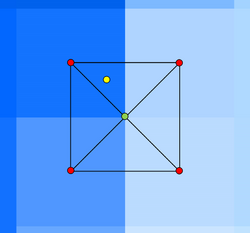TUFLOW Topography Guidance
Common Questions Answers (FAQ)
Should I use Z Lines or Z Shapes for topographic modifications?
The Z Line feature is a predecessor of Z Shape. As it has only one attribute, elevation, the GULLY or MIN / RIDGE or MAX / THICK / ADD options have to be specified in the control file at the end of the “Read GIS Z Line” command. This limits the Z Line layer to be used for multiple applications and separate command, including separate GIS layer, has to be used for every option combination. The development of Z Lines has ceased and some alternative options might not be available with new features, such as Sub-Grid Sampling.
The new Z Shape feature has four attributes to capture all possible option combination within one GIS layer and a single command “Read GIS Z Shape” in the control file. As such, Z Shapes are recommended to use over Z Lines.
Z Lines can be modified into Z Shapes by copying the GIS lines and points into 2d_zsh layer and specifying the options in the Shape_Option attribute.
What procedure does TUFLOW follow for interpolating DEM elevations?
- The DEM elevation is assumed to be in the centre of the DEM grid cell as shown by the four red circles in the picture below.
- The four DEM elevations surrounding the yellow Zpt in the attached are triangulated by forming four triangles all having a common vertex (green circle) located at the middle of the four DEM elevations.
- The elevation of the common vertex (green circle) is equal to the average of the four DEM elevations (red circles).
- As the Zpt falls within the top triangle the elevation assigned to the Zpt is the planar (linear) interpolation of the three elevations of the top triangle.
Can I use SRTM data for modelling rivers if no other sources are available?
SRTM is a very coarse grid. May be suitable of catchment discretisation of large catchments (100km2+) but generally should never be used for 1D or 2D flood modelling. For river bathymetry, SRTM or LiDAR won't penetrate accurately below the water surface so ground survey or bathymetric survey will be required. For the floodplain SRTM data may able to be used, provided its vertical accuracy is checked against ground survey data (SRTM is usually very inaccurate in the vertical). For this reason, approaching local agencies if they have bathymetry data (Local Council, County or State Department) might be the next step. In some countries these agencies host the data online for download.
| Up |
|---|
